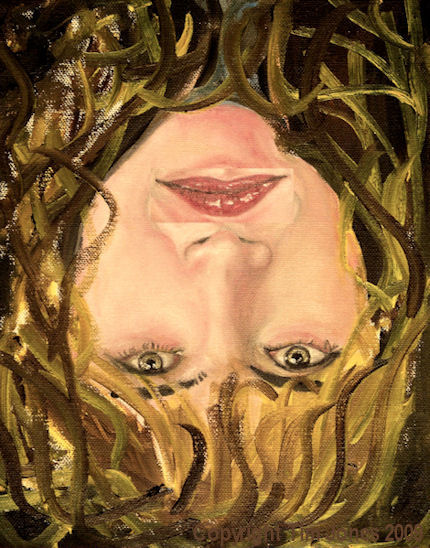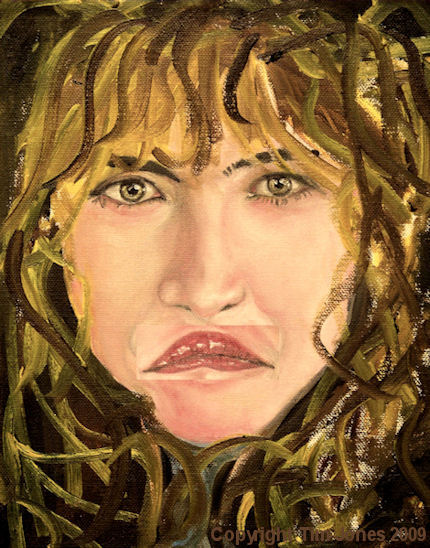I keep running into this demonstration of how strange our brains can be, so thought I’d have a go myself.
Have a look at the inverted face below. Upside down, but still pretty cute eh?

Now look at the next picture where she’s turned the right way round – yuk!
But it’s exactly the same picture just inverted. Our brains somehow pick out the individual elements of the face and reconstruct them as we normally expect to see them – I guess? Personally, I can’t see a glum person in the top picture without turning my head to a degree – I’ve just discovered – not so good for my neck.

This simple example was made by cutting, rotating, and pasting the mouth of the girl in the painting.
I saw something like this a couple of years back at the Exploratorium Science Centre in San Francisco. The most recent demonstration I’ve seen was at the Weird Science event here in London earlier this month, where Richard Wiseman had us all in hysterics with a doctored picture of Margaret Thatcher. That was doubly strange, as: (a) he’d turned the eyes round as well (which is the correct thing to do, but my painting struggles because of the hair) and, (b) rotated the image slowly, which revealed there is a certain point where the brain clicks over to seeing the ‘new’ image – the gestalt switch moment.
The Exploratorium exhibition also included so-called hybrid images of faces that change expression depending on how near or far you stand from them. The effect still works very well on a computer screen, but you need to stand a long way back.
Not entirely sure how the brain processes compare for the two types of phenomena, but I find the ‘switch’ is more gradual with the hybrid images. In deference to copyright I’ll not share the snaps I took, but you can find something very similar at the ‘Hybrid Images’ website owned by Dr.Aude Olivia, Dept. of Brain and Cognitive Sciences at MIT.
